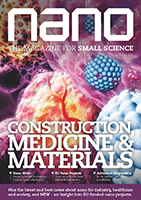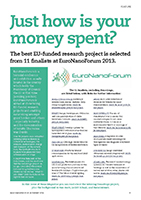At LTFN we consider the privacy of our visitors to be extremely important. This privacy policy document describes in detail the types of personal information is collected and recorded by LTFN and how we use it.
If you require any more information or have any questions about our privacy policy, please feel free to contact us by email.
This website is operated by LTFN web administration group, which belongs to the Nanotechnology Lab LTFN, in Aristotle University of Thessaloniki-Greece.
When we say ‘we’, ‘us’ or ‘LTFN’ it is because that is who we are and we own and run the website.
Collection and retention of your personal information
We collect information from you when you contact us via form, as appropriate. You do not have to give us any personal information in order to use the website. However, if you wish to take advantage of some personalized services we offer, you will need to provide us with certain information about yourself. For example if you wish to contact us or send us a request, we will collect some or all of the following personal data from you: name, email, affiliation you belong/work etc.
We require this information to understand your needs and provide you with a better service, and in particular for the following reasons: internal record keeping, to improve our services, send promotional emails about news for LTFN’s activities or to manage your contact request.
All the data is stored in the hosting service’s infrastructure and can be accessed by LTFN’s administration group or the hosting service’s administration.
Security
We are committed to ensuring that your information is secure. In order to prevent unauthorized access or disclosure, we have put in place suitable physical, electronic and managerial procedures to safeguard and secure the information we collect online.
Link to other websites
Our website may link to external sites that are not operated by us. Please be aware that we have no control over the content and practices of these sites, and cannot accept responsibility or liability for their respective privacy policies.
Log Files
Like many other Web sites, http://www.ltfn.gr/ makes use of log files. These files merely logs visitors to the site - usually a standard procedure for hosting companies and a part of hosting services’ analytics. The information inside the log files includes internet protocol (IP) addresses, browser type, Internet Service Provider (ISP), date/time stamp, referring/exit pages, and possibly the number of clicks. This information is used to analyze trends, administer the site, track user's movement around the site, and gather demographic information. IP addresses, and other such information are not linked to any information that is personally identifiable.
Cookies
A cookie is a small file which asks permission to be placed on your computer's hard drive. Once you agree, the file is added and the cookie helps analyze web traffic or lets you know when you visit a particular site. Cookies allow web applications to respond to you as an individual. The web application can tailor its operations to your needs, likes and dislikes by gathering and remembering information about your preferences.
We use traffic log cookies to identify which pages are being used. This helps us analyze data about web page traffic and improve our website in order to tailor it to customer needs. We only use this information for statistical analysis purposes and then the data is removed from the system.
Overall, cookies help us provide you with a better website, by enabling us to monitor which pages you find useful and which you do not. A cookie in no way gives us access to your computer or any information about you, other than the data you choose to share with us.
You can choose to accept or decline cookies. Most web browsers automatically accept cookies, but you can usually modify your browser setting to decline cookies if you prefer. This may prevent you from taking full advantage of the website.
Children's Information
We believe it is important to provide added protection for children online. We encourage parents and guardians to spend time online with their children to observe, participate in and/or monitor and guide their online activity. LTFN does not knowingly collect any personally identifiable information from children under the age of 16. If a parent or guardian believes that LTFN has in its database the personally-identifiable information of a child under the age of 16, please contact us immediately (using the contact in the first paragraph) and we will use our best efforts to promptly remove such information from our records.
Controlling your personal information
You are free to refuse our request for your personal information, with the understanding that we may be unable to provide you with some of your desired services.
We will not sell, distribute or lease your personal information to third parties unless we have your permission or are required by law to do so. We may use your personal information to send you promotional information about third parties which we think you may find interesting if you tell us that you wish this to happen.
You may request details of personal information which we hold about you. If you would like a copy of the information held on you please email us.
If you believe that any information we are holding on you is incorrect or incomplete, please write to or email us as soon as possible, at the above address. We will promptly correct any information found to be incorrect.
You also have the right to ask us to delete the personal information we hold for you.
Online Privacy Policy Only
This privacy policy applies only to our online activities and is valid for visitors to our website and regarding information shared and/or collected there. This policy does not apply to any information collected offline or via channels other than this website.
Consent
By using our website, you hereby consent to our privacy policy and agree to its terms. If you have any questions about how we handle user data and personal information, feel free to contact us.
Update
This Privacy Policy was last updated on: Tuesday, May 22nd, 2018.
Should we update, amend or make any changes to our privacy policy, those changes will be posted here.

















